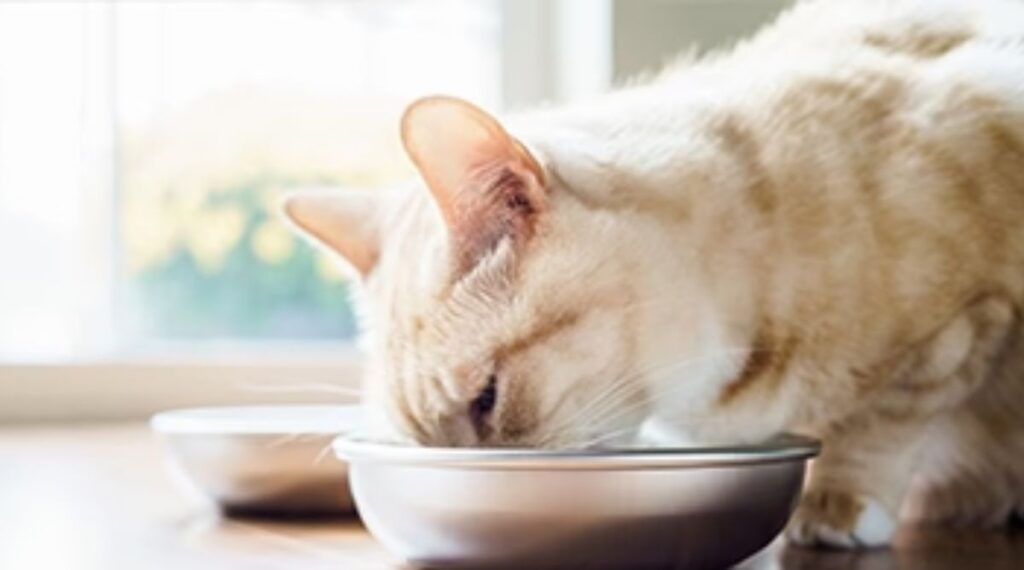Recently, Whisker Fatigue in Cats has become a concern among pet owners and vet doctors. This condition refers to the stressed or uncomfortable state a cat could find itself in due to the overexertion of the cat’s whiskers.
Cats use their vibrissae to navigate through the surroundings. Whiskers are complex and are innervated with a lot of nerves, which gives them the ability to detect environmental changes. For instance, using a bowl that is too deep or drinking from a narrow glass can prove sensitive since the cat’s whiskers will rub against the rim or edges.
We will explore Whisker Fatigue in Cats, which signs to look out for, what might be causing it, and how to help your cat if they reach this stage. We will also pose some questions that will further address this issue.
What Is Whisker Fatigue in Cats?
Although Whisker Fatigue in Cats does not constitute a medical problem for cats and is not substantiated by any literature, it is a term that cat whisperers use to indicate the stress or discomfort some cats go through in an overexcited state of their whiskers.
Whiskers serve as a distinguishing characteristic of a cat. They are classified as specialized hairs substantially more developed than ordinary body hair. The sense of touch is very efficient in cats, thanks to their whiskers, which assist them in figuring out their surroundings.
Whiskers are also helpful for sensing changes in the air, nearby objects, and distance. When cats drink or eat from a bowl too small, their whiskers touch the bowl. This contact triggers the cat’s sensory perception when the cat’s brain is likely overwhelmed, resulting in whisker fatigue.
The Role of Whiskers
As notable as their other features are, cats rely on each of their whiskers for various reasons. Whiskers are affixed to the skin, giving them an excellent mobility range and connecting to a cat’s nervous system. Whiskers are the most flexible hair in a cat’s body because they have exceptional control over them. Proprioceptors are located at the base of each whisker, which these cats use to measure distances and send tactile signals to their brain.
Some of the uses of Whisker Fatigue in Cats include:
Find their way in the Dark: Well, cats and night creatures, and for these creatures, avoidance of obstacles is easily managed because of the unknown tension whiskers create, even in faint light.
Detect Prey and Predators: Towards and around energies, cats can detect gentle vibrations that alarm them towards nearby prey and threats.
Measure spaces: Cats rely heavily on their whiskers to determine whether they can pass through tight spaces, which is crucial for their ergonomics and well-being.
Signs of Whisker Fatigue with Cat
It is essential that every pet parent can identify the signs of Whisker Fatigue in Cats. Here are some behaviors that your cat may display if they are suffering from whisker fatigue:
Selective Appetite: A sudden change in your cat’s eating habits can be an early sign of whisker fatigue. They may leave the food untouched at the bottom of the bowl or eat tiny morsels intermittently.
Scratching at Bowls: If cats suffer from whisker fatigue, they may scratch at their food or water bowls, trying to remove their contents or avoiding contact with the sides.
Eating from the Floor: Cats who are uncomfortable eating from the bowls may tend to pull food out of the bowls and eat it off the floor instead.
Panting or Vocalization: Cats expressing frustration and discomfort may tip over their food and water bowls and vocalize while pacing around the house.
Hostile Behavior: Caution should be taken, as kids can become hostile while eating if they suffer from whisker fatigue. It is a form of stress that their bodies are responding to.
Reluctance to Enter Small Enclosures: Your cat may become more careful about where it goes, avoiding places that used to be easy to access.
Abnormal Agitation or Stress: Look for stress signals like avoiding contact or quietness, which could mean that your cat is trying to avoid interaction.
Causes of Whisker Fatigue in Cats
A critical cause of Whisker Fatigue in Cats is the structure of their food and water bowls. Deep and narrow bowls can catch the whiskers and touch the sides, creating sleeplessness for the whiskers. Other possible causes include:
Bowl Material: Some materials used may rub against the whiskers, causing fatigue.
Alarming Surrounding: Changes in the household, such as new pets or pets and loud noises, can increase the problem of whisker fatigue.
Hidden Health Problems: While some changes in eating behavior can relate to dental problems, they can also relate to other health issues, so it is necessary to eliminate these possibilities.
How to Help Your Cat with Whisker Fatigue
If you think that your cat is suffering from Whisker Fatigue in Cats, there are helpful ways to mitigate their discomfort, which include the following:
Change Bowls: Change to wider, modern, shallow bowls that allow your cat to eat without touching them. There are specially made feline whicker-friendly bowls that can be purchased.
Use paper plates: If you are hapless, you can serve the kitty’s food on paper plates instead. This ensures that the kitty does not rub his whiskers on the edges of a bowl while eating.
Monitoring Eating Situations: You should observe your cat eating. If it continues to be in discomfort, get a veterinarian involved to check for other health issues.
Create a calm environment: Your cat’s eating area must be peaceful and without interruptions. These changes can foster positive changes like stress reduction and improved meal satisfaction.
Water Sources: Instead of a bowl, try using a water fountain. This would also solve the issue of whisker fatigue that many cats suffer from whilst drinking running tap water.
Vet Appointments: Cats are required to see the vet for a general health checkup now and then. If you observe drastic changes in your cat’s eating behavior, it would be prudent to consult the vet for an additional checkup.
Preventive Measures for Whisker Fatigue
Advocacy for Whisker Fatigue Forewarning: Worrying about Whisker Fatigue Whisker Fatigue in Cats is fundamentally concerned with ensuring that the cat does not overuse its whiskers. To this end, here are some valuable suggestions for achieving that goal:
Utilize Shallow Food and Water Bowls: These bowls are useful because they do not allow your cat’s whiskers to touch the edges while eating or drinking from them.
Provide a Spacious Living Environment: Your cat must have enough space to move in freely without touching its whiskers too much.
Minimize Overcrowding: Tidying your home will prevent too many chances of touching the whiskers against other objects.
Choosing the Right Accessories: There are beds for cats with low sides that help avoid whisker fatigue.
What If the Problem Isn’t Whisker Fatigue?
Your cat may have a sensitive appetite issue for many reasons other than whisker fatigue. Some of them are:
Dental Disease: Cats with painful dental disease often show signs of wielding whisker fatigue.
Other Health Issues: Cats with liver, kidney, or inflammatory bowel disease usually have eating issues.
Behavioral Issues: Aggressive behavior from other cats over the food bowl can cause some cats to develop bad eating habits.
Environmental Stressors: Lose of appetite can be related to other types of stress, such as a recent relocation, the addition of a new family member, or considerable noise when eating.
Nausea: Everything that triggers nausea in a human has the power to make a cat not eat.
If you have bought new cat bowls and your creatures are not eating normally, visit your veterinarian. Cats are known to conceal their suffering very well. It takes a lot of pain for a cat to express their discomfort. Always watch out for any sudden weight loss or drastic change in eating patterns, as this may require the help of a veterinarian quickly.
Conclusion: Whisker Fatigue in Cats
Whisker Fatigue in Cats is a sensitive yet crucial subject that every pet owner should know. As much as it does not exist within the realm of science yet, it can be uncomfortable for some cats. Correctly identifying the symptoms and altering the feeding routine can help maintain your cat’s healthy physiological and psychological state.
Other than this, a consultation with a veterinarian is crucial because numerous issues may cause a change in feeding behavior. With adequate care and concern, every cat owner can give their furry partner a life free of worry from eating with whisker fatigue.
FAQs: Whisker Fatigue in Cats
How Do I Know If My Cat Has Whisker Fatigue?
If your cat is suddenly difficult when eating, fussing and pawing at their face while eating, or dragging food out of a bowl using their paws, it may indicate whisker fatigue. Always begin by looking for other problems that could be causing it.
Can Whisker Fatigue Be Reversed?
Though whisker fatigue is not yet considered a medical condition, switching to shallower and wider bowls may relieve it to a certain degree. Any remaining issues should be discussed with a veterinarian.
Is Whisker Fatigue A Thing?
The concept of whisker fatigue is controversial. Some vets believe it exists, while others think there is little proof. It is essential to monitor your cat’s behavior.
What Happens If I Trim My Cat’s Whiskers?
It is unwise to cut off a cat’s whiskers. They are as important to cats as radar is to a ship and essential for the cat’s use of space. Not having whiskers will induce anxiety because the cat will be unable to understand anything.
Do All Whisker-sensitive Cats Suffer From Whisker Fatigue?
Cats are not alike, so not everyone will suffer from fatigue. Some cats are very sensitive to stimuli while others are not, and some bowl designs and personalities also affect it.







